Posted: May 7th, 2009 | Author: Vicky | Filed under: Uncategorized | No Comments »
After the fieldwork of the port, it is proved again that the spectacle and surveillance society coexist everywhere in modern society.According to Debord’s concept, this world is shaped by the images of mere represtations.In the the stock place of cargo, we see the variety logos of containers from the globe. These logos presnt the choices of the shipment in the whole world. On the other hand, Â we also meet the officials who work in the port in charge of coast guard. According to Foucault’s notion of the Panopticon, we live in the society of surveillance. Everyone is constantly visible and controlled by invisible power. Everthing imported has to register and get permission. Everyone needs to get the visa to acorss the border and is traced permnanently.Â

Posted: May 7th, 2009 | Author: Xu Shengxi | Filed under: creative industries | Tags: autonomous innovation, creative cluster | No Comments »
President Hu Jintao pointed in the 17th National Congress of the CPC that should develop Chinese culture as soft power, as culture is an important resource of improving national cohesion, creativity and comprehensive national strength (Keane 2009, p. 221). Moreover, enhancing cultural industry which is considered as soft power can help to ensure essential cultural rights of Chinese citizen, it also adapts to government’s policy in improving human rights (Keane 2009, p.221). China has been labelled global manufactory for a long history, as Keane (2009, p.221) mentions that China put forward “autonomous innovation†in order to transform from ‘Made in China’ To ‘Created in China’.
SWOT method also can be use in analysing the current developing situation of creative industry in China.
Strengths: Chinese traditional culture has a strong power when it faces to western culture. As Keane (2008) pointes that China joined in WTO in 2001, however, the phenomenon of western culture invasion which was circulated did not emerge. Compare to advanced creative countries, China has a short history of creative industry but now has a strong governmental policy to support. Take a small city, Jiaxing of Zhejiang province (my hometown) for example. Jiaxing is well-known as it is a famous land of milk and honey in southeast China. As the south of the lower reaches of the Yangze River, Jiaxing takes advantages of its historical background and traditional culture, presents in some parts of urban structure, like lakes, alleys, stone road and house with wood construction.
Meiwan Street has been using since 2006, it retains a lot of traditional folk house of southeast of China and then makes some modern modifications. It mainly established many architecture of pseudo-classic style. In term of commercial aspect, the cultural cluster constitutes restaurants, handmade article shops and book store. In term of heritage, Meiwan Street maintains former residence of Zhu Shenghao, the people who translated Shakespeare’s works in modern China, additionally, retains the site of temporary Korean government in war time. Meiwan Street becomes a cultural creative cluster which gathers tourism, restaurant and entertainment. Every year it will holds many kind of cultural pageant like Chinese traditional Lantern Festival. Inosculating profound humanity history and commercial programs as well as architecture is the suitable method of developing creative industry in small city like Jiaxing. Furthermore, the flourishing of Meiwan Street drives the attention and price of the Real Estate program named Dongling Meiwan Garden which near to Meiwan Street.
Historical heritage: lakes, alleys, stone road and house with wood construction (picture from internet)
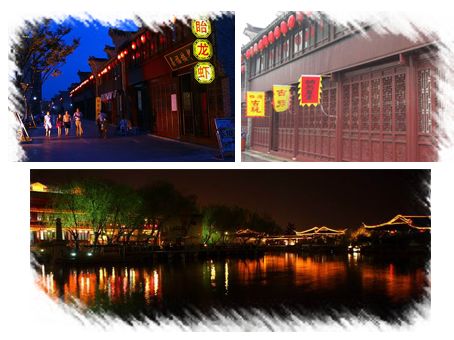
Cultural Creative cluster: tourist industry and catering industry (picture from internet)
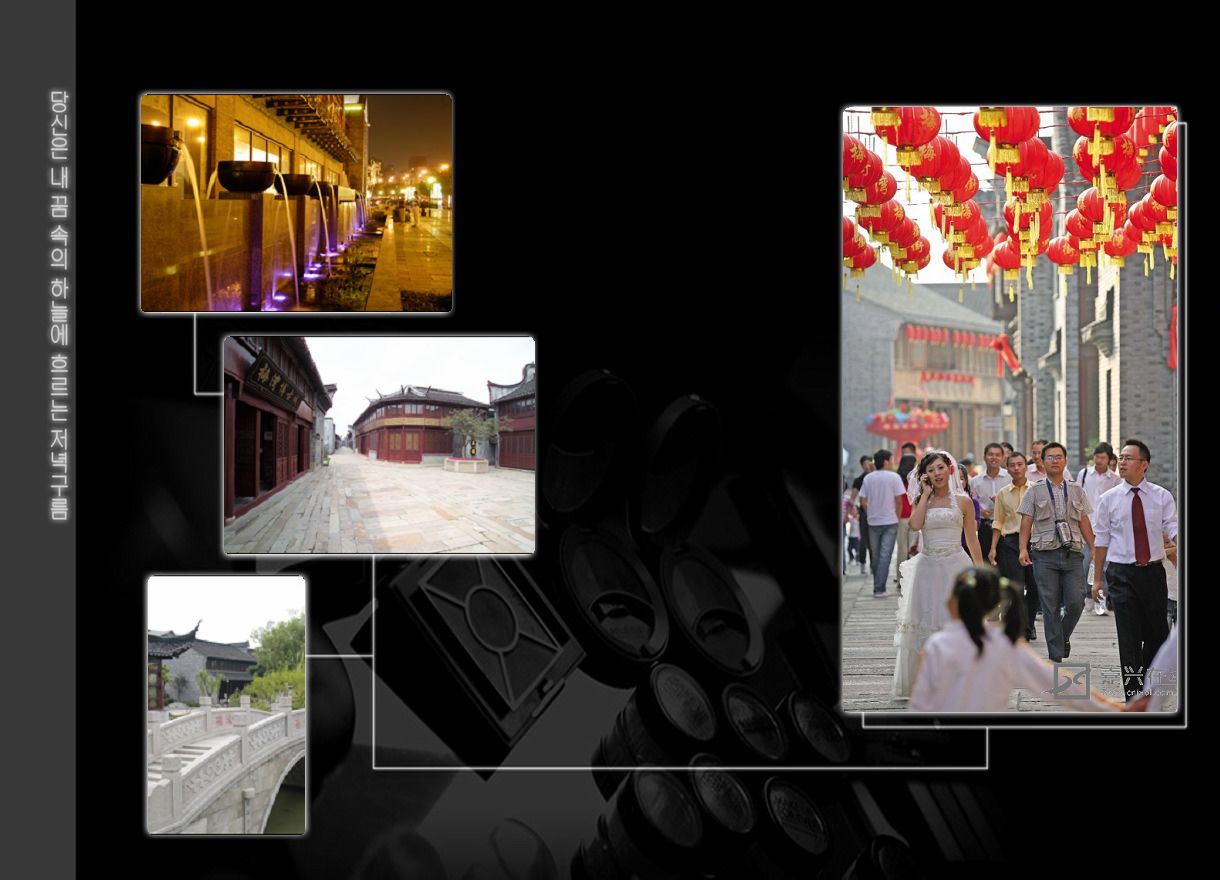
To sum up the above example about Meiwan Street, the way of combining geographic economy and culture together can be the effective form of transforming economic system under the guidance of Eleventh Five-Year Plan (Keane 2009, p.222). As Keane (ibid) considers that the creative industry with Chinese characteristics absorbs local and traditional culture.
Weaknesses: Firstly, some governments develop local creative industry impetuously and sightlessly, and they plagiarize exotic instead of creating their own ideas (Chen 2008). For instance, animation industry in China has a relatively low quality through it develops rapidly in recent years. Secondly, profound Chinese culture, to a certain degree, has been ignored and considered as out of fashion culture.
Threats: As Keane (2009, p.223) claims that United Kingdom, which is the advanced creative country, chandelle Chinese creative industry in post-WTO time according to its soft cultural invasion.
Opportunities: Keane (2009) mentions WTO brings chance to creative industry of China accompany threats. The benefits from developing creative industry are apparently, it increases wealthy, promotes urban spatial restructure, developing traditional culture and to a certain degree, it contributes to solve social problems (Keane 2008). According to the gatekeeper of Shanghai Media Cultural Park, the reuse of disused old factory benefits the retired and unemployed worker of original Shanghai Window Hook Factory. In other words it provides job opportunities and contributes to social security.
In term of my essay question, the relationship between the development of creative cluster and urban spatial structure, it is a mode of spreading point-to-area. For example, a new creative technology park could absorb relative creative labour which leads to population flow. Population flow drive establishment of various facilities, such as entertainment, education, company, tourism and eating trade, etc. Creative cluster which based on culture, it is also an economic district, could form a remarkable geographical position which contributes to the urban structure.
References:
Keane, M 2009, ‘Great Adaptations: China’s Creative Clusters and New Social Contract’, Journal of Media & Cultural Studies, vol. 23, no.2, pp.221-230
Chen, S F 2008, Ten Mistaken Ideas of Creative Clusters, China Academic Journal Electronic Publishing House.
Posted: May 7th, 2009 | Author: Fu Hanqing | Filed under: creative industries | No Comments »
The research of ‘Labor, Migration, Creative Industry, Risk’ done by Neilson (2008) mainly focuses on the relationship between migrant networks and creative industry. Migrant networks in China consist of Chinese migrant workers and foreigners. For the former, it seems that the relationship between migrant workers and creative industry is not very obvious. Migrant workers usually engage in manual work, but creative work is always mental labor. However, the deep relation should be dug. Both infrastructure construction of creative industry and exploiture of real estate which accompanies by the development of creative industry need a flood of cheap labor, Ned & Neilson (2008) also indicated in ‘Precarity as a Political Concept, or, Fordism as Exception’. Large influxes of migrant works solve the problem of a lack of labor force. For the later, as a special part of the migrations, foreigners who have professional knowledge have become a new power and bring international influence to creative industry in China. The cause-effect chain in these relations can be described as follows: cheap labors support the development of real estate, and then the development of real estate invests the creative industry. And the prospering creative industry offers a large amount of jobs for migrations, but drives original inhabitants. Ned & Neilson (2008 p.61) further point out that creative industry has a large capacity that ‘the highly diverse composition of precarity gathered around the sign of creative labor’.
Ross’s study of ‘The New Geography of Work: Power to the Precariou’s (2008) concerns about the features and conditions of migrant workers in creative industry. She points out that migrants play important roles but are always low-skill workers in creative industry. There will be no guarantee of their work condition and rights. However, their precarity can help escaping the state’s strictures and capitalist discipline.
Be different from the authors above, in the article of ‘Migrant Workers, Collaborative Research and Spatial Pressures: An Interview with Meng Yue’, Ned & Meng Yue (2008) place the migrant workers to a broader social space and discuss the creative life of migrant workers in the edge of the city. A great number of migrant workers assemble in the periphery of the city. However, their attitudes of the edge are quite complex. On one hand, they do not accept the edge as their home and do not want to locate in this place. Some of them hope to go back to their hometown, and others dreamed of melting into the real urban life. On the other hand, migrant workers recognize this life style to a certain extend. They always bring their folks. In addition, they tend to use something related to their works to beautify their environment. These can be considered as methods to express their life.
Neilson, Brett and Rossiter, Ned (2008) ‘Precarity as a Political Concept, or, Fordism as Exception’, Theory, Culture & Society 25.7/8: 51-72.
Neilson, Brett (2008) ‘Labour, Migration, Creative Industries, Risk’, Urban China 33: 42-43.
Ross, Andrew (2008) ‘The New Geography of Work: Power to the Precarious?’, Theory, Culture & Society 25.7/8: 31-49.
Rossiter, Ned and Meng Yue (2008) ‘Migrant Workers, Collaborative Research and Spatial Pressures: An Interview with Meng Yue’, Urban China 33: 44-47.
Posted: May 7th, 2009 | Author: Yao Xiao Xiao | Filed under: real-estate | Tags: advertising, CHFE | No Comments »
By looking at the real estate advertising at The 7th CHFE, there are mainly three selling points developers usually focus on: noble treatment, western lifestyle and close to nature, which also can be seen from the project names, such as ‘Residence of the North Europe’, ‘East Splendid Park’, ‘Top Town’, ‘The Center of Top Class’, ‘Spring Garden’, ‘Crown Garden’, etc. The most used words are: honorable, luxurious, glory, royal, five-star treatment, English property service, top class, private, swim pool, peaceful, green land, ecological. The most popular scene is blue sky, clean water, birds, green gardens, peaceful life, and luxuriously decorated house.
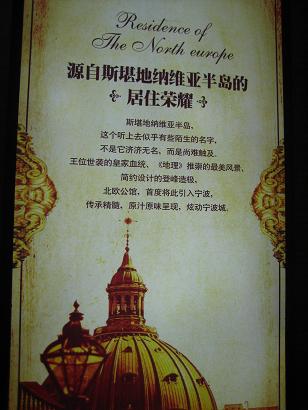
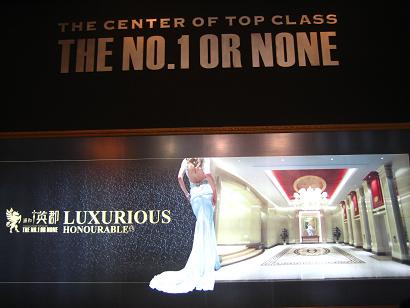
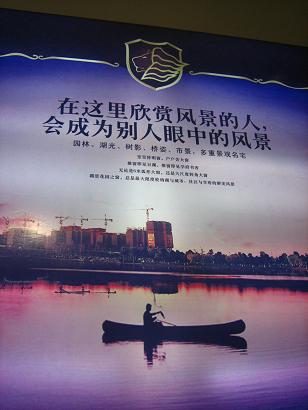
Posted: May 7th, 2009 | Author: Yao Xiao Xiao | Filed under: real-estate | Tags: advertising, CHFE | No Comments »
The 7th China International Housing & Furnishing Exposition (CHFE) held in Ningbo International Conference and Exhibition Center on April 10-13, 2009. CHFE exhibits products of real estate, building materials and housing decoration etc.

About 20 real estate developers exhibited their products there, most of which are for residential use.
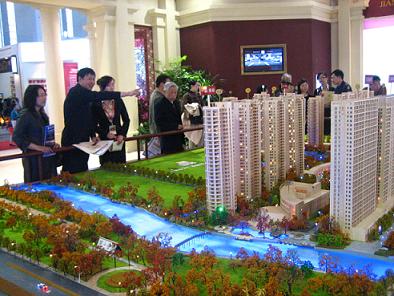
Most of the real estate exhibits were decorated luxuriously with a western style. Pianos and violins are played there showing an upper class lifestyle. The most impressive scene to me is that a girl played piano in an exhibit corner decorated with classic western elements: oil painting, plaster model and fireplace.
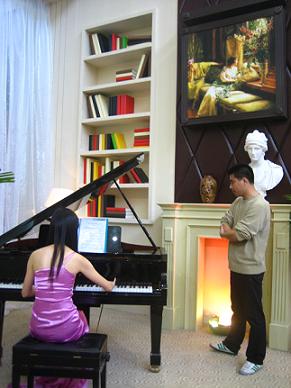
It is also interesting to find out that almost all the real estate billboards are ‘bilingual’. Apparently, they are not going to sell those houses to foreigners. English is more a decorative thing here to make the advertising a superior look. The most ridiculous English sentence is on a billboard by Ningxing City Garden, which reads ’you changed your master’s degree…from computer science to…so you could participate in…’. It seems like the advertising designer randomly picked it from somewhere just to decorate the advertising.
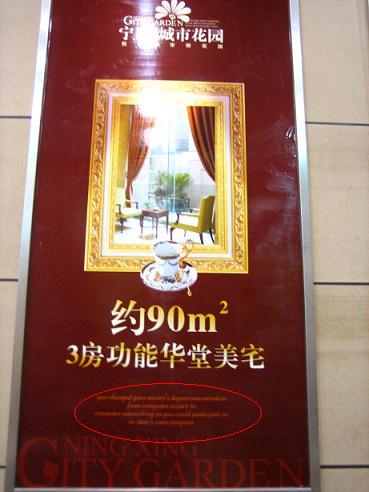











Recent Comments